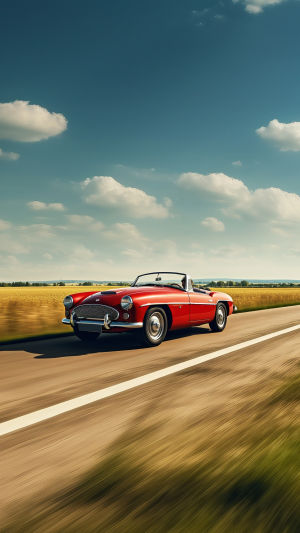The Jaguar E-Type, introduced in 1961, is widely regarded as one of the most iconic and influential sports cars ever created.
Known for its breathtaking design and exceptional performance, the E-Type has earned its place as a star of the British automobile industry.
The Jaguar E-Type's design is often hailed as revolutionary and timeless. Created by the talented designer Malcolm Sayer, the E-Type broke away from the traditional car designs of the early 1960s with its sleek, aerodynamic shape.
The car’s long, flowing lines and smooth curves were inspired by aerodynamics and racing technology, which gave the E-Type a distinctive and modern appearance. The design was not only visually stunning but also functional, contributing to the car's high-speed stability and overall performance.
The E-Type's design was so striking that it was featured on the cover of Enthusiast magazine shortly after its release. Enzo Ferrari, the renowned founder of Ferrari, famously declared the E-Type the "most beautiful car ever made."
This praise from one of the most respected figures in automotive history underscores the E-Type’s extraordinary aesthetic appeal.
Performance was another area where the Jaguar E-Type excelled. Under the hood, the E-Type was powered by a 3.8-liter inline-six engine, which was later upgraded to a 4.2-liter engine.
These engines were capable of producing up to 265 horsepower, allowing the E-Type to achieve impressive speeds and acceleration. The car’s top speed exceeded 150 mph, making it one of the fastest production cars of its time.
The E-Type's performance was not limited to straight-line speed. It also featured advanced suspension systems and disc brakes, which contributed to its exceptional handling and driving dynamics.
The car's lightweight construction and well-balanced chassis allowed it to navigate corners with precision, offering a driving experience that was both exhilarating and refined.
The Jaguar E-Type had a profound impact on the automotive world, influencing the design and engineering of future sports cars.
Its combination of style and performance set a new benchmark for what a sports car could be, inspiring a generation of car designers and enthusiasts. The E-Type’s success demonstrated that a car could be both aesthetically pleasing and technically advanced, paving the way for other manufacturers to pursue similar goals.
The E-Type also played a significant role in promoting British engineering excellence on the global stage. Its success in international markets helped to establish Jaguar as a leading brand in the automotive industry, showcasing British innovation and craftsmanship.
The E-Type’s popularity in the United States, in particular, helped to cement Jaguar’s reputation as a maker of high-performance sports cars.
The legacy of the Jaguar E-Type continues to endure long after its production ceased in 1975. The car's design and performance have left an indelible mark on automotive history, and it remains a highly sought-after collector's item.
Classic car enthusiasts and collectors around the world value the E-Type for its historical significance, aesthetic beauty, and driving experience.
In addition to its status as a collector’s item, the E-Type has appeared in numerous films, television shows, and media features, further cementing its place in popular culture. Its iconic status has made it a symbol of 1960s automotive design and a representation of British engineering prowess.
Restorations and enthusiast groups dedicated to the E-Type continue to celebrate and preserve the car’s legacy. Various events, including classic car shows and races, feature the E-Type as a centerpiece, allowing new generations to appreciate its enduring appeal.
The car’s influence is also evident in modern Jaguar models, which often draw inspiration from the E-Type’s design and engineering principles.
The Jaguar E-Type will never go out of style | The Big Thing with Magnus Walker
Video by Hagerty





